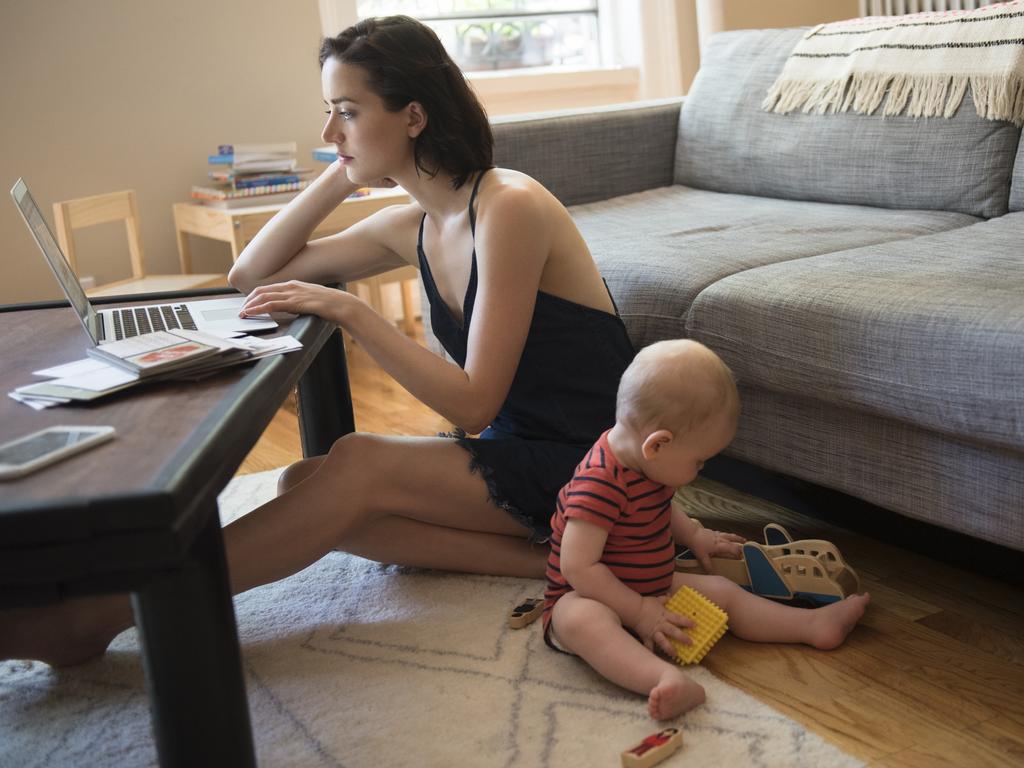Flexible work is achievable and efficient
The pandemic is likely to change the way we work — including how parents split domestic duties. Here’s how three leaders see it.

MICHELLE DIXON
Chief executive, Maddocks

We are settling into a new normal. In our business, when both parents are working, we see great examples of scheduling — who gets to work when and who is on kids’ duty. But that means they take time out during the day and have to catch up at night. Many women are still doing the bulk of the kids’ work. So, short term, it is hard for most families to deal with that. And for single parents it’s horrendous. Long term, people will have learnt how to work differently and employers will be more accepting of it. It’s also humanising. I had a videoconference with 14 partners last week and my daughter thought that would be a good time to have a cuddle, and then my dog hopped up on my lap and no one cared. I think we’ll move to a more broadly accepted idea of flexible working; we’ll see people working in different ways. But there are massive downsides too. One of my concerns is it will lead to discrimination, society wide. Digital natives and younger generations are comfortable with communicating this way. An older partner who had been resistant to working outside the office, is loving contacting people through Skype and said: “Why have I been going interstate for two-hour meetings?” All of that will change.
–
SUE MORPHET
President, Chief Executive Women

We do have to watch out for women because of the place they hold in the economic structure of our community. Flexibility of work is seen as the province of women and looked upon as second rate. WFH will show that flexible work can be treated seriously. The second parent in the household, usually a full-time worker, will understand the complexities of juggling and, at the moment, women still do nine hours more housework a week. We welcome the government’s support package, especially if it covers casual and part-time work as women hold 68 per cent of all part-time jobs. Keeping them in their jobs means they are more likely to hold on to their retirement wealth creation. The childcare subsidy is something I would go kicking and screaming to save after this chapter. It is the single biggest hurdle for women going back to work and is being talked about as an essential service for the first time. If that stays it would be a huge win for women. CEW is also asking for a gender lens across the budget in October to see the impact this virus is having on that sector and women in general. The homelessness issue for women over 50 was an issue before this and can only be compounded by this overlay.
–
SAM MOSTYN
Chair, Citi Australia; director, Transurban & Mirvac

During World War II, when men were in short supply, women were essential to our economy, giving rise to social support for women — free takeaway meals and free childcare. Today there will be more pressure on women to return to unpaid care and domestic duties. Many were already over-represented in casual jobs and now will be reliant on the emergency payments, and their passage back to reliable paid work will be difficult. Many women are being encouraged to draw down on their superannuation, which sets up a lack of savings for their retirement. And the pressure of domestic and family violence has risen. Ensuring that women are involved in the design of programs and promotion of how these rescue packages will work. The lockdown has shown there are ways of working that women have always understood: multi-tasking, the more efficient use of time together and contributing from more convenient places. Flexible work is achievable and efficient. Hopefully, if we retain this new way of working, we could see the removal of some barriers to women’s inclusion. I hope the collaborative efforts required to manage a crisis show what is needed to make for a better society in good times.





To join the conversation, please log in. Don't have an account? Register
Join the conversation, you are commenting as Logout